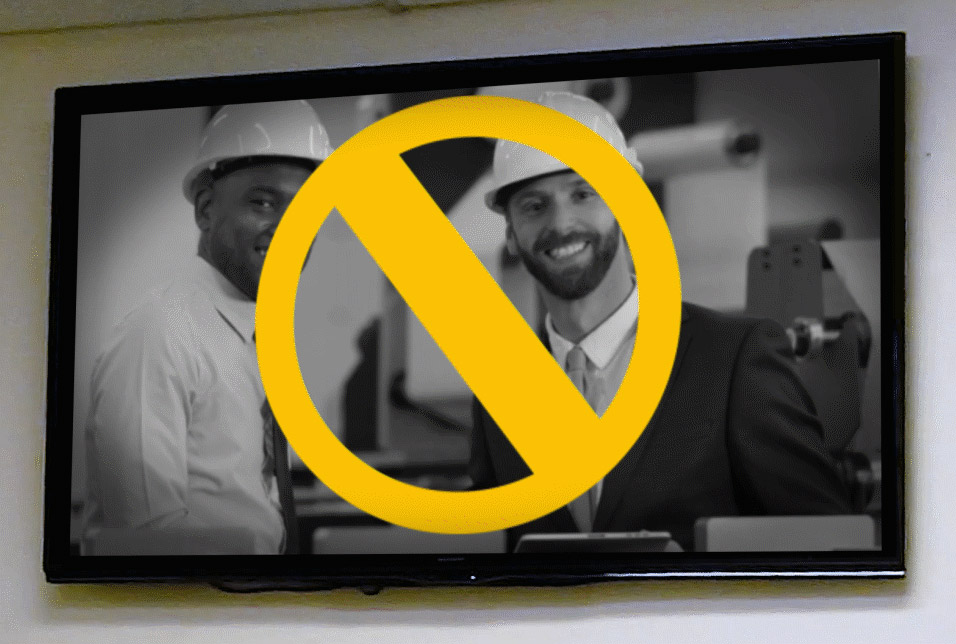Most Training is Designed for Office Workers. Here’s Why That’s Dangerous.

Are you a manufacturing company? If so, the likelihood that you are using a training platform designed for the average, college-educated office worker is pretty high. Almost every employee training program is built using the same techniques, methods, and philosophies of training developed for a corporate, sit-down-at-your-desk-and-work-on-your-computer type environment.
But for workers on the production floor, this is not only impractical, but dangerous. Those suit-and-tie DVDs (and even VHS tapes!) don’t resonate with production team members.
Why Training in Context Can Improve Employee Retention
Put simply, manufacturing safety training is infinitely more powerful when the content represents what workers actually see and experience every day. For example, using scenes set around the very machinery that employees use daily in high-risk, hazardous environments.
Presenting a training curriculum that reflects the reality of the manufacturing industry creates an emotional hook—and it’s the emotional connection that moves the learning from short term memory into long-term memory. This is the outcome you want for your company.
Your employees have a direct impact on safety, quality, and productivity. Are you confident that your programs are built to meet everyone’s needs?
Can you train in their primary language and at their education level? In order to be compliant with most regulations (OSHA, GFSI, etc.), employee training courses and materials must be provided in an employee’s native language. It’s also essential to use training at their education level. Remember, comprehension is key to driving the right behaviors on the floor.
Can your training run without internet access? Production floors or even agriculture fields aren’t often suited to a clear WIFI signal or any sort of online access. Using a platform that can deliver, monitor, and track training even when offline can be a game-changer for your training, recordkeeping, and audit-readiness.
Is the content portrayed in familiar settings? The ability to apply new information increases exponentially when it’s presented in familiar settings. Are the machines that your employees use featured? Does the work environment on the screen echo the one they are physically in?
Can you deliver group training and individual training? In manufacturing, every minute counts. Finding time for training is a challenge. Can your platform provide training to 20 employees at one time? How about 50? Or 150? The ability to provide simultaneous group training, and document each attendee’s scores, is a boon for busy manufacturing floors. But it’s great to have flexibility for individual training too. For example, a make-up course for an employee that missed training, or refresher training for one that is struggling.
If your safety training program doesn’t check off most of the best practice items listed above, it’s time to reevaluate the efficacy of the platform it’s built on and explore new, better options.
What are some of your training best practices? Tell us about them in the comments section!





